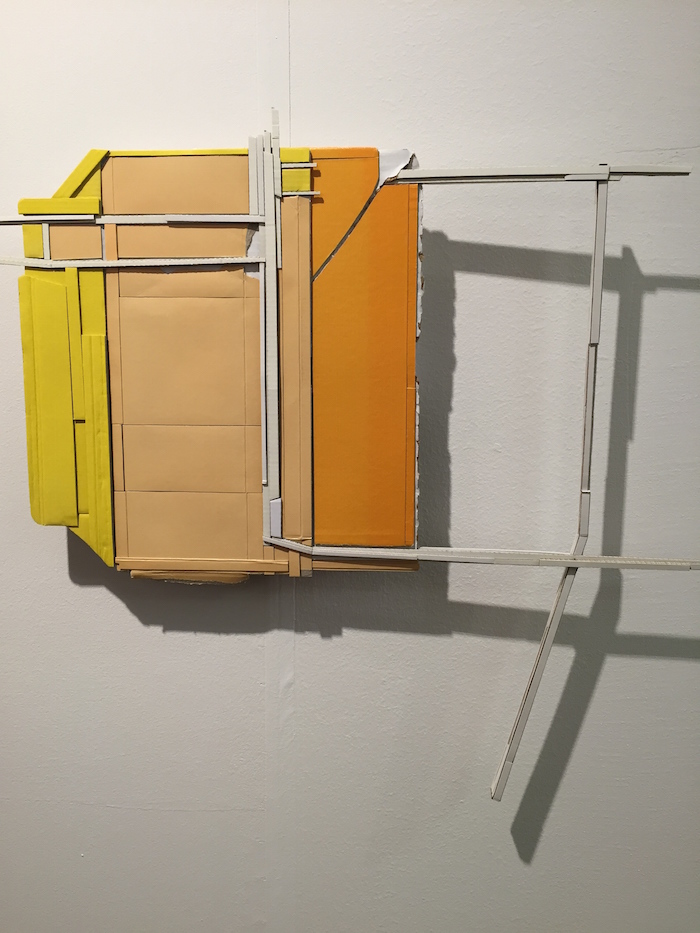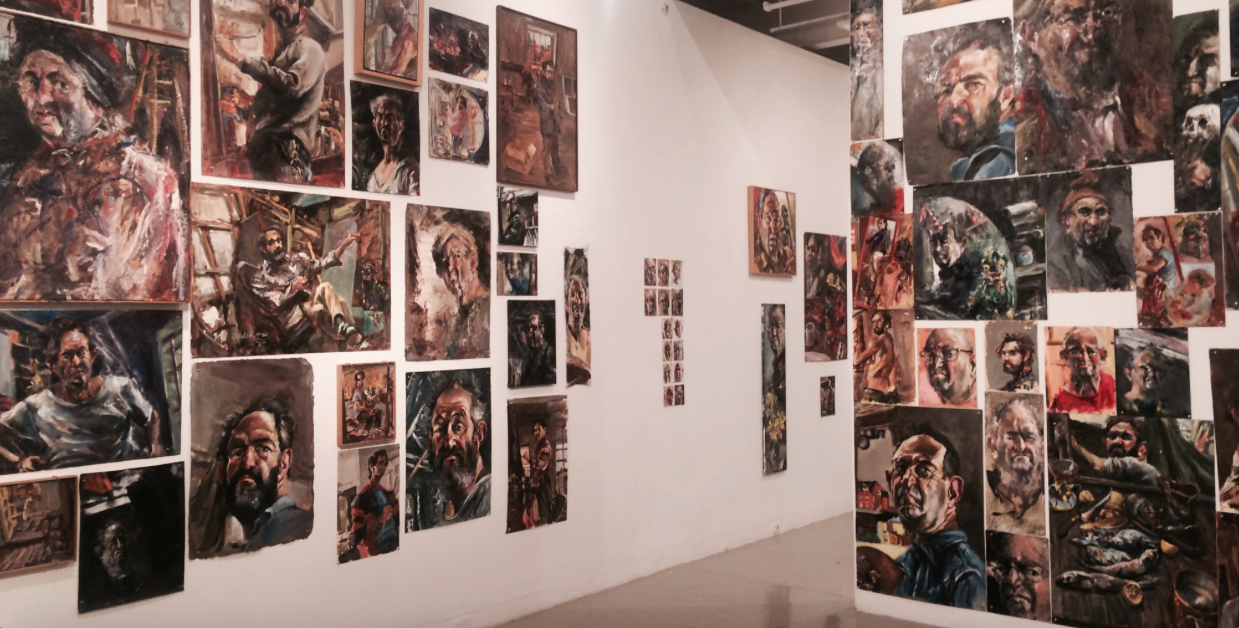Suzy Kopf on Art on Paper, Spring/Break, Armory, Volta, and Pulse
When asked how they feel about art fairs, most artists I know generally paraphrase the punch line of the old John Baldessari joke: Artists at art fairs are like teenagers walking in on their parents having sex. “You know it happens, you just never want to see it.” Still, as an artist based in Brooklyn until this past May, I have grown accustomed to attending the annual New York fairs, which concluded last Sunday, March 8.
For those readers who have never been to an art fair, picture the white cube lovechild of a circus and a trade show. Most fairs take place on piers or in tents organized into rows upon rows of booths lit by hot overhead lighting and staffed by haughty gallerinas not too far removed from unhelpful womenswear staff at Nordstrom’s. The shopping mall aspect is undeniable.
With the number of the brick and mortar galleries decreasing, art fairs are an important and growing aspect of the art market. Some gallerists have come to count on art fairs to make the majority of the year’s profits. And for those who can afford it, art fairs have become a primary place to buy art.
Last weekend I visited five New York art fairs so you don’t have to. These are my notes.
Day One:
Accompanied by a crew of three artist friends, I began the day at Art on Paper, a brand-new fair in lower Manhattan near South Street Seaport. The show had an obvious West Coast skew and featured prominent galleries from Los Angeles and San Francisco with some East Coast friends of lesser prominence. It was a manageable size and we were in and out in about an hour.






From there, we went to Spring/Break, which, for the sake of journalistic integrity, I will reveal I had a piece in. This year, this fair relocated from its former home in SoHo to the upstairs offices of the Pennsylvania train station at 31st street. The unconventional venue’s urban decay (peeling paint, ripped up floors, musky old New York stench) was in keeping with the fair’s branding as the alternative fair. Instead of booths being run by galleries, Spring/Break featured rooms organized by independent curator teams.







After wolfing down some dubious Penn station snacks (which were absolutely necessary for team morale) my compatriots and I headed to the origin of it all— the Armory— of which all these other shows are technically considered satellites. Having procured a VIP pass, we got in line and proceeded to wait about an hour in 30-degree cold. Located on two piers on the west side of Midtown Manhattan, the Armory is divided into the Modern and the Contemporary sections.
Once inside, a certain kind of vertigo takes hold— there is just too much art. There are too many people. It is very warm. Over the din, I mouth to my friend, ‘Lets stick together.’ I lose him ninety seconds later.







True fatigue had set in by the time we wrapped up The Modern at 5pm. My pedometer revealed we had walked over eleven miles. Deciding it was beer o’clock; my pals and I retired to the bar of our final fair of the day, Volta, to await the arrival of a few more friends. A pier away from the Armory, Volta is a fair where galleries generally devote their entire booth to a single artist. Running on IPA and sheer willpower, we walked to Volta and then called it a day around 7:30pm.




Day Two:
Despite promises of free admission and snacks, I was unable to get any takers for day two of my art fair extravaganza. Undeterred, I headed out in the morning to the Independent only to realize when I was a block away that I did not have a pass. Disinterested in ruining my totally free art fair tour by paying the $20 admission fee, I opted for PULSE (to which I had a pass). This year PULSE was held in the Flatiron District on 18th Street in Manhattan. The smallest of the shows I attended this year, PULSE is Miami/NYC fair put together by midsized galleries. Well respected, this year’s show has enjoyed a number of rave reviews and was probably my favorite of the weekend as well.






ART TRENDS I AM EXCITED ABOUT:
1. Collages (both from paper and digital prints of manipulated images) and cut paper are back. Surrealism lives! (Examples: Lizzie Gill, Thomas Witte, Charlie Engman)
2. Wallpaper and pattern in general are having a moment. Detailed paintings that display an invested interest in ornamentation and pattern were all over the fairs this year. (Examples: the originator, Joyce Kozloff, Todd Lanam, Elisabeth Condon, winner of this year’s PULSE prize)
3. Photorealistic watercolors and drawings being shown in greater numbers than previous years.
(Examples: Lisa Sigel, Robert Townsend)
ART TRENDS I AM OVER:
My dear friend who runs a Brooklyn gallery reminded me of the brilliant Sol Lewitt quote, “Too many people mistake new materials for new ideas.” This year’s fairs had a bit of material problem as demonstrated by these first four offenders:
1. Art made out of money. We saw still life paintings with money as the background, sculptures of money flowers and brooms, trunks of ripped up money. We get it, capitalism is bad.
(Example: Margaret Bowland)
2. Art made out of books. I guess because we’re post-internet now we don’t need books. At least that’s what all the artists ripping up books to make trees, animals and hybrids of the two seem to think. We also saw a good number of works that created ‘books’ out of other materials. And the art fair standby, high-resolution photographs and paintings of the spines of books. (Example: Federico Uribe)
3. Art made out of unexplained cheap material. Cardboard was a repeat offender, typically painted a bright color. Why it was cardboard in the first place was a universal mystery. A commentary on high/low material? Never addressed. Also seen, straw and other natural materials used to create a ‘natural’ environment in an unnatural space. It just looked like straw. (Examples: Ryan Sarah Murphy, Tyler Hildebrand, Andrej Dubravsky)
4. Art made out of piles of dead technologies. Old computers, copiers, treadmills. Obsolete technology is one of the cheapest art materials around and artists this year found lots to pile up, plug in what still works and leave us to draw our on conclusions about the meaning of it all. (Examples: Brent Birnbaum, Taezoo Park)
5. Art borrowing a bit too liberally from both the style and subject matter of famous artists. These offenders were found exclusively at the Armory. (Examples Kelly Reemsten/Wayne Thiebaud lookalike, Matthew Hawtin/Ellsworth Kelly lookalike, Raimonds Straprans/Richard Diebenkorn lookalike)
Conclusions:
When one looks at so much art in such a short amount of time, it can be difficult to feel anything but overwhelmed. If I had to pick a single word to describe the entire experience I would have to say it was inconsistent. Some galleries or curators created a single transformative installation in their allotted space; others wanted to make a tiny white cube. Some created group shows, others solo showcases. Compared to past years, I felt like there was more work on every wall, but that the pieces themselves were generally smaller (some of the smallest Alex Katz paintings I’ve ever seen were in this year’s Armory).
The explanation amongst the gallerists and artists I spoke to this weekend is that we are moving into a more conservative time and the New York art market reflects that. Bright, painterly yet abstract works (Evan Nesbit); photorealism and technical process work (paper cutting, collage, patterning) are all in. Absent was much in the way of overtly political art. The fairs don’t particularly lend themselves to new media or performance. I only saw a handful of videos in the 15+ miles of fair I walked this weekend and one ‘performance’ at Spring/Break where the curators appeared to be playing a card game with their friends. There was significantly less large expensive sculpture a la Anish Kapoor or Jeff Koons than I have seen in past years. This was a year for painting, works on paper and that art fair darling, neon rope light (Robert Montgomery).
Are art fairs a decisive and clear read of the art market at large? Absolutely not. But they provide a small cross section of what is happening both nationally and globally. For this reason it can be instructive and sometimes even entertaining to wade through the inconsistencies for the revelations.
Author Suzy Kopf is a recent Brooklyn to Baltimore transplant. She is a painter and currently an MFA Candidate in the MICA MFAST program. She is a co-founder of the Gowanus Swim Society, a Brooklyn, NY based art collective.






